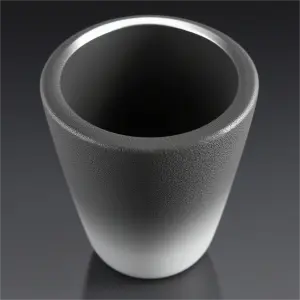Are you looking for a crucible? One that can withstand extremely high temperatures. It is highly resistant to thermal shock. A crucible that is more durable than traditional materials. Then, a silicon carbide crucible might be suitable for you. It is perfectly suited for smelting, casting, or laboratory applications. This guide will tell you everything you need to know. Including its properties, including how to choose and how to maintain it.
What is a silicon carbide crucible?
It is a high-performance container. It can be used to melt metals, alloys, and other materials. Silicon carbide crucibles can be used at extremely high temperatures. They are different from clay-graphite crucibles. They are primarily made of silicon carbide, which is a synthetic material renowned for its high hardness and heat resistance.
What are the advantages of a silicon carbide crucible?
Silicon carbide crucibles offer many benefits.
First, their thermal conductivity is excellent; heating is fast and even. Because of these characteristics, they save more electricity and gas, and melting time is shorter.
Second, their resistance to thermal shock is very strong; they are not prone to cracking even with sudden temperature changes. They are very sturdy, resistant to impact, and wear. Therefore, their lifespan is longer than that of ordinary crucibles.
Third, they are resistant to chemical corrosion and withstand erosion from slag and fluxes. This characteristic makes them particularly suitable for melting aluminum and copper.
Finally, they can withstand very high temperatures, up to over 1600 degrees Celsius.
Where are silicon carbide crucibles commonly used?
Silicon carbide crucibles have a wide range of uses. They are used for melting non-ferrous metals, such as in the processing of aluminum, copper, brass, and other non-ferrous metals. Jewelry making and recycling also rely on them. They are also used in laboratories for high-temperature research and analysis. They can also be used in glass and enamel production.
How to choose the right crucible?
Choosing the right crucible depends on four factors.
First, consider what metal you are melting. Different metals are suited to different crucibles.
Second, consider your furnace type. The crucible shape must match the furnace—round, oval, straight cylindrical, etc.
Third, consider size and capacity. Don’t choose one that is too large, and do not fill it beyond 80% capacity.
Fourth, consider quality and brand. Buy from reputable suppliers, such as RONGDA crucibles, which have been proven by the market.
How to maintain a crucible?
New crucibles must first be fired; they must be slowly heated to the working temperature for preheating before being used to melt metal. It is essential to avoid thermal shock; preheating should be slow, with a preheating time of at least around 4 hours.
Silicon carbide vs. clay-graphite crucible: which is better?
Although clay-graphite crucibles are cheaper, silicon carbide crucibles have more advantages. The lifespan of a silicon carbide crucible is much longer, typically two to three times that of a clay-graphite crucible. Moreover, silicon carbide crucibles melt faster, save more energy, and are more corrosion-resistant. Therefore, although the initial purchase cost is higher, the cost per melting operation is lower.
Summary
A silicon carbide crucible is a great investment. It is reliable, efficient, and durable. If you understand its properties and know how to maintain it, it will certainly improve your process and enhance your efficiency.
Interested in purchasing? Welcome to view our products.
Post time: Sep-26-2025

